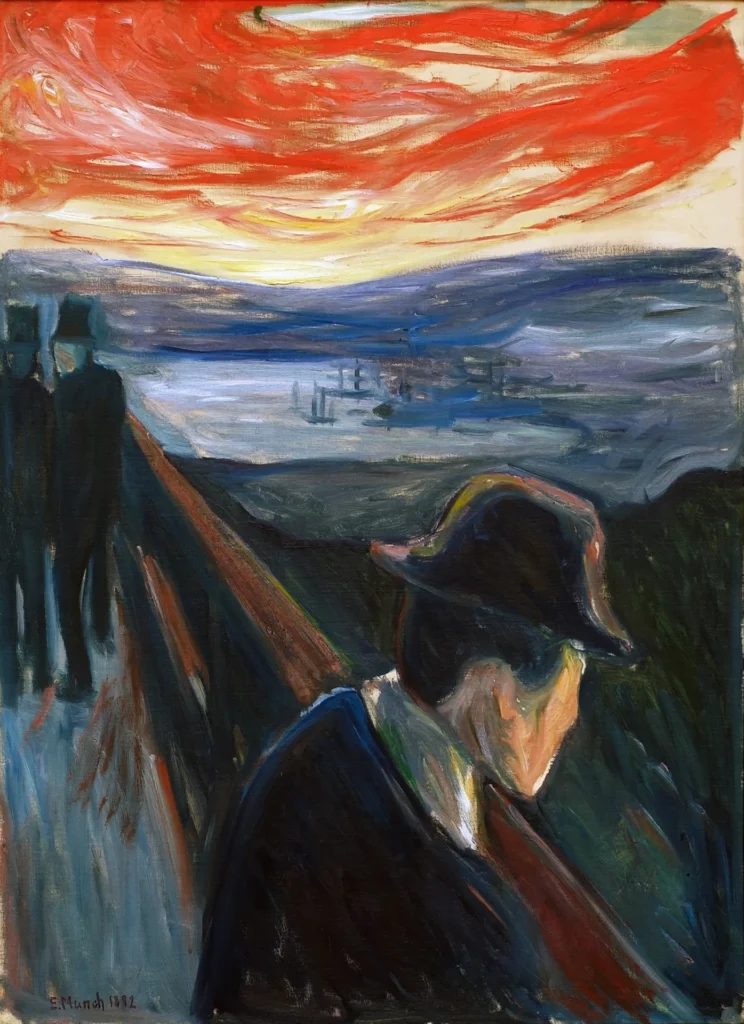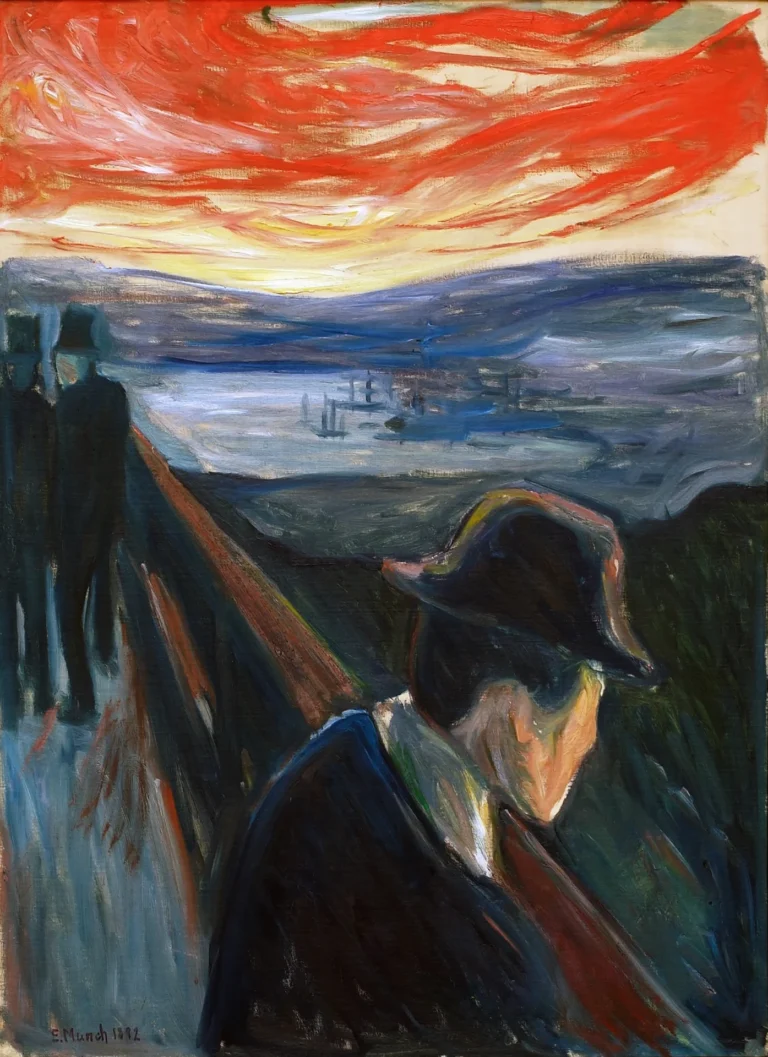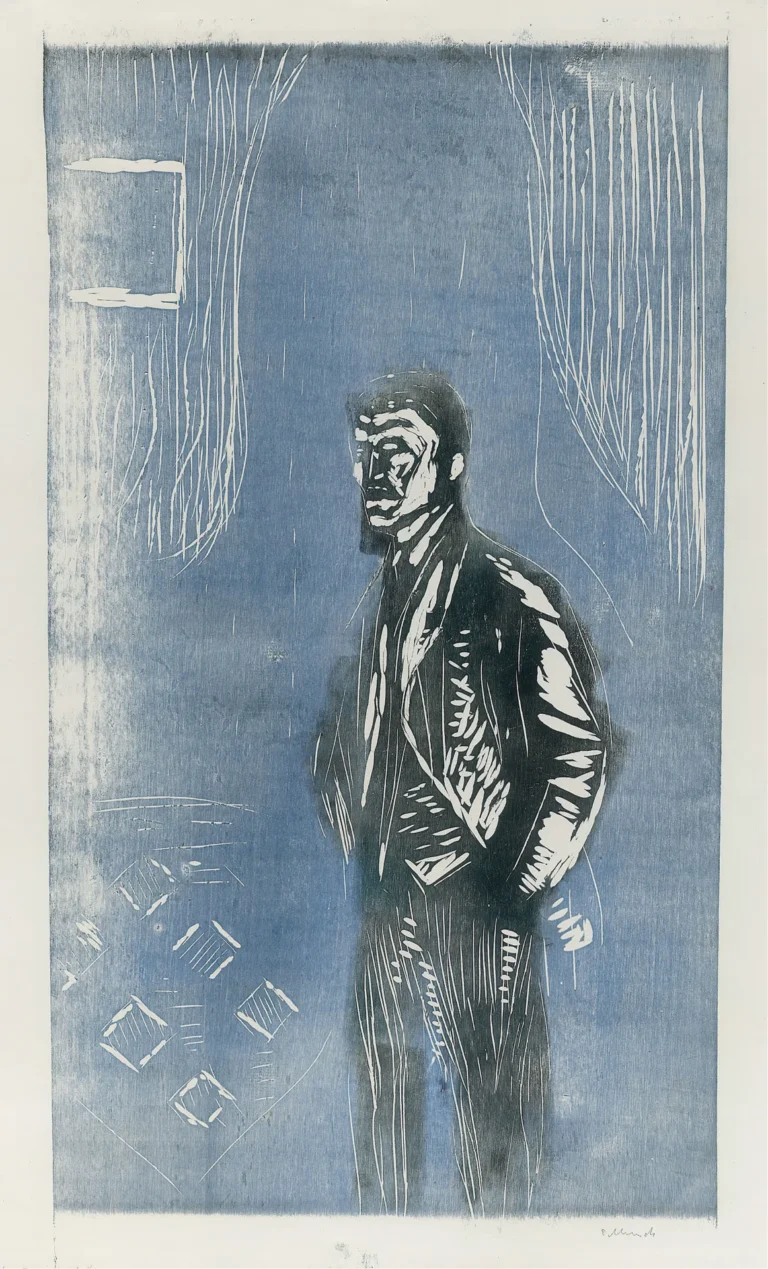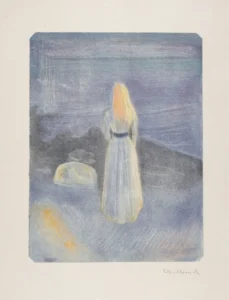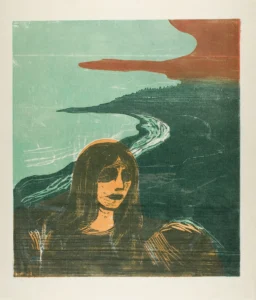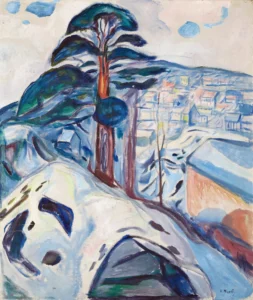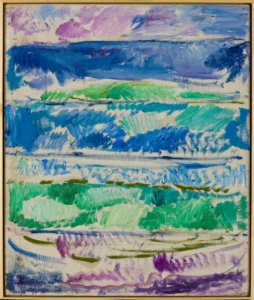Despair (1892)
Edvard Munch's Despair is a profound expression of inner turmoil and melancholy, created in 1892. The painting showcases a solitary figure on an overlook, immersed in introspection as it gazes into a vibrant sky. Munch's mastery of color and emotional depth renders this work a compelling exploration of human anxiety and loneliness, crucial themes that permeate his oeuvre. The dramatic landscape hints at both nature's beauty and the despair within, making it a significant precursor to Munch's more celebrated 'The Scream.'
Year 1892
About the Artwork
Did You Know
Liked what you see? Add it to your collection.
Enjoyed reading? Share it.
... continued
Date and Creation
The painting is dated to 1892, although some sources suggest there might be versions or related works from 1893-1894 as well.
Composition and Setting
Despair features a solitary figure standing on an overlook or a bridge, often identified as being in Oslo. The figure is depicted in a state of introspection or melancholy, gazing out at a dramatic landscape. The setting includes a twilight sky with swirling red and orange hues, which contrasts sharply with the cooler, muted tones of the landscape below, including a body of water and distant buildings.
Artistic Style and Technique
The painting is characterized by Munch's expressive use of color and brushwork, typical of Expressionism. The vivid and intense colors, particularly the fiery sky, are meant to convey the inner turmoil or despair of the figure. The style is a mix of figurative and semi-abstract elements, contributing to the intense emotional power of the work.
Inspiration and Context
The painting was inspired by Munch's personal experience of walking along a road near Oslo in the evening with two friends. During this walk, he felt a sudden sense of melancholy and observed the sky turning blood red, which he described as feeling an "infinite scream through nature."
Relationship to Other Works
Despair is often seen as a precursor to Munch's more famous work, "The Scream." It explores similar themes of anxiety, loneliness, and the universalization of personal distress, which are central to Munch's oeuvre.
Location and Exhibition
The painting is part of the collection at the Munch Museum in Oslo, Norway.




